Featured Fragment – Mexican Mustang Liniment for Man and Beast: Patent Medicines at the Squirrel Creek Site
By Michelle C. Salvato
This month we are once again returning to our series highlighting the artifacts recovered from the Trogdon-Squirrel Creek site (31Rd1426/1426**) in Randolph County, North Carolina. Dovetail Cultural Resource Group conducted data recovery excavations at this site on behalf of the North Carolina Department of Transportation (NCDOT), guided by the data recovery plan authored by NCDOT (Overton 2014). Nearly 2,000 glass artifacts were recovered from the Trogdon-Squirrel Creek site with approximately 5 percent of the recovered glass shards definitively determined to be medicine bottles. At least 10 different medicines were definitively identified during the analysis of the site.
[table id=1 /]
Archaeologically, patent medicine bottles include an incredibly diverse assortment of styles, colors, and sizes, and their content include a wide variety of concoctions. From bitters and tonics to sarsaparillas, a vast range of home remedies were available to the population for personal use. Remedies were often strengthened using ingredients such as morphine, cocaine, or opium but then sold to the public to cure anything from colic in infants to venereal diseases to “female complaints” (Hagley Museum and Library n.d.). Many of the bottle fragments found at the Trogdon-Squirrel Creek site contained large enough portions of embossed lettering to identify which patent medicine it contained, thus helping to more accurately date the site.
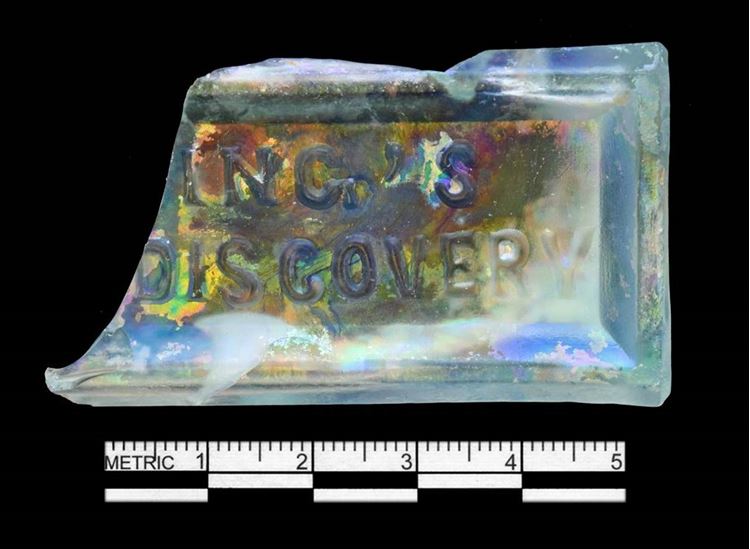
Dr. King’s Discovery Patent Medicine Sample Bottle Recovered From Site 31Rd1426/1426**.
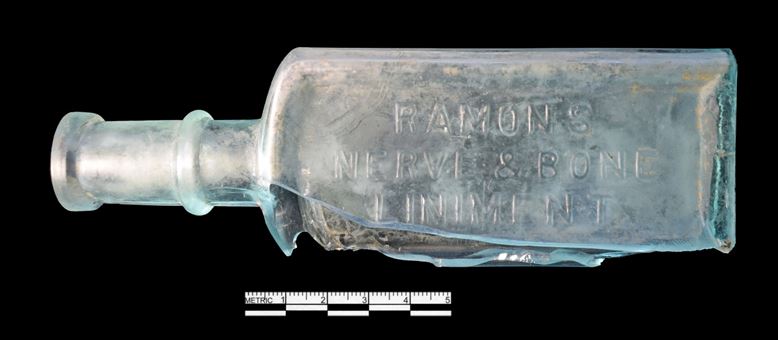
Almost Complete “Ramon’s Nerve and Bone Liniment” Patent Medicine Bottle Recovered From Site 31Rd1426/1426**.
Two of the recovered bottle fragments are sample- and full-size “Dr. King’s New Discovery” medicine bottles. This medicine, nationally recognized by the mid-1880s, was marketed as a cure for consumption, known today as tuberculosis (Meyer 2011). A circa-1907 ad even claims that the remedy is “the greatest life saver of all time” (Griffin 2013). Like so many other patent medicines of the time, “Dr. King’s New Discovery” contained questionable ingredients by today’s medical standards. A 1905 article by Samuel Hopkins Adams in Colliers Magazine warns, “As it is a morphine and chloroform mixture, ‘Dr. King’s New discovery for Consumption’ is well calculated to strike terror to the doctors or to any other class or profession, except, perhaps, the undertakers” (Meyer 2011).
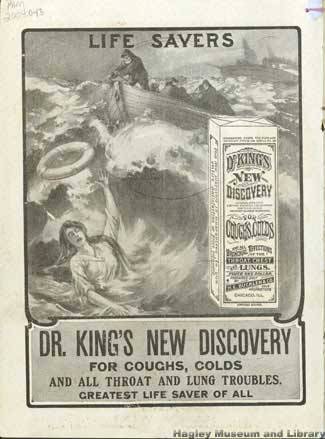
A circa-1907 Dr. King’s New Discovery Ad Claiming the “Life-Saving” Properties of the Remedy (Griffin 2013).
A fragment of a “Mexican Mustang Liniment” bottle was also recovered from the site. Also dating to the latter half of the nineteenth century, this medication serves as yet another example of the supposed versatility of these patent medicines. Not only did they claim to cure almost any human ailment, one particular ad advertises that the medicine was to be used on animals and humans alike! Another late-nineteenth-century ad for “Mexican Mustang Liniment” shows an oversized bottle of the medicine as well as a small bottle in a young girl’s hand. Ads like these are incredibly helpful to archaeologists as they often note the ingredients and uses of the bottle while also containing an image of the bottle itself.
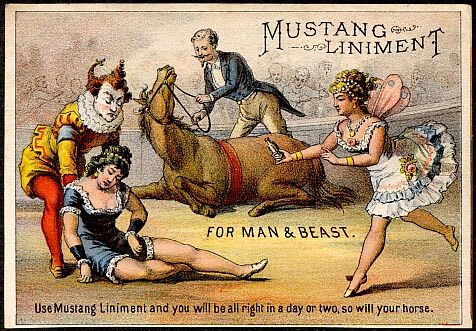
A circa-1880s Ad For “Mexican Mustang Liniment” Produced By The Lyon Manufacturing Company Shows That The Medicine Can Cure Both Horses And Humans (Meyer 2012).
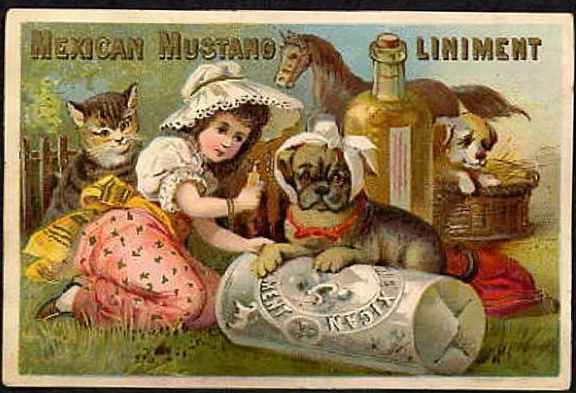
A Circa-1880s Ad For “Mexican Mustang Liniment” That Rather Helpfully Shows A Full Size Bottle Of The Medicine. Surrounding the bottle are a young girl and a number of adorable animals all presumably taking the “safe” medicine (Meyer 2012).
Patent medicines very quickly fell out of favor with the public following the passage of the Pure Food and Drug Act in 1906 which required the listing of remedies’ contents. It is no wonder that the inhabitants of the Trogdon-Squirrel Creek site had so many different kinds of patent medicine bottles leading up to this act though; most medicines did not work to actually cure any disease but just masked the symptoms with a bad combination of drugs and alcohol. Luckily for us we do not have to take concoctions of morphine and chloroform (and who knows what else!) in order to cure common ailments today.
Any distributions of blog content, including text or images, should reference this blog in full citation. Data contained herein is the property of Dovetail Cultural Resource Group and its affiliates.
References:
Griffin, Jessica D.
2013 Dr. King’s New Discovery for Coughs and Colds, H. E. Bucklen & Co., Chicago, ILL. WordPress.com. Electronic document, https://oldmainartifacts.wordpress.com/, accessed May 2017.
Hagley Museum and Library
n.d. History of Patent Medicine. Electronic document, https://www.hagley.org/research/digital-exhibits/history-patent-medicine , accessed June 2018.
Meyer, Ferdinand, V
2011 Peachridge Glass Website. Electronic document, https://www.peachridgeglass.com/, accessed May 2017.
Meyer, Ferdinand, V
2012 Peachridge Glass Website. Electronic document, https://www.peachridgeglass.com/, accessed June 2018.
Odyssey Marine Exploration, Inc.
2017 Odyssey’s Virtual Museum Website. Electronic document, https://odysseysvirtualmuseum.com/, accessed May 2017.
Overton, Brian
2014 Archaeological Data Recovery Plan: Site 31Rd1426, Randolph County, North Carolina. North Carolina Department of Transportation Human Environment Section, Raleigh, North Carolina.
